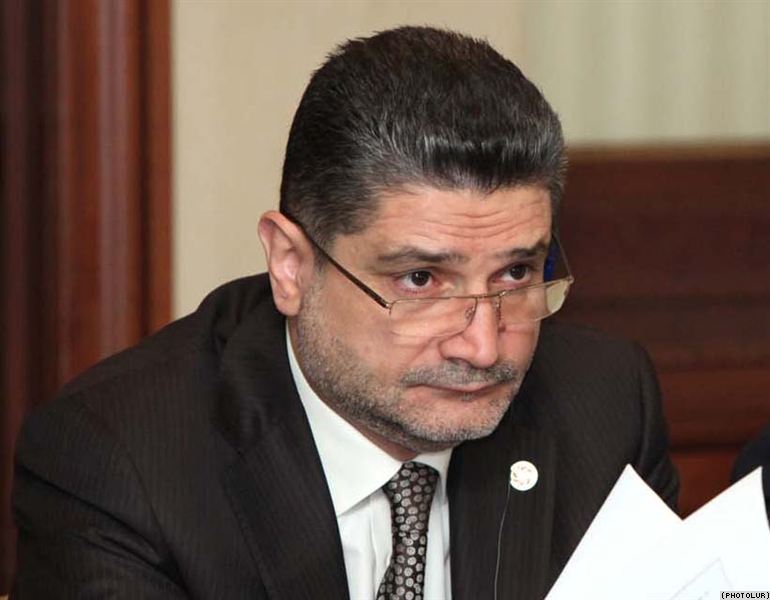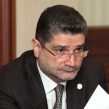
Armenia Again Rules Out Membership in Russian-Led Customs Union
Publication: Eurasia Daily Monitor Volume: 9 Issue: 78
By:

Armenia has again ruled out the possibility of joining a Russian-led customs union, which Russia’s President-elect Vladimir Putin hopes could form the backbone of a future “Eurasian Union” of former Soviet republics remaining within Moscow’s orbit. Yerevan has made this clear in advance of free trade negotiations with the European Union that will mark an important milestone in the South Caucasus state’s European integration.
In an interview with the Moscow daily Kommersant published on April 4, Armenian Prime Minister Tigran Sargsyan argued that membership in the Customs Union of Russia, Kazakhstan and Belarus would “make no sense” for Armenia because it has no common border with any of the three countries. “The whole point of a customs union is to have commercial exchanges without customs control,” Sagsyan said. “In our case, that is impossible as we have to pass through the territory of a neighboring state and twice undergo customs administration. […] Our Russian colleagues understand this situation. We are looking for ways of cooperation without the Customs Union,” he added.
The union formally came into existence in January 2010 but is supposed to start functioning in earnest this year with the planned elimination of all barriers to trade, capital and labor movement among its members. Putin underlined its geopolitical significance for Moscow when he floated the idea of the Eurasian Union in an October 2011 newspaper article (Izvestia Daily, October 4, 2011). He said the Eurasian Union, seen by some Kremlin critics as an attempt to recreate the Soviet Union, would build upon Russia’s existing common economic space with Belarus and Kazakhstan.
Moscow is also keen to bolster the Eurasian Economic Community (Eurasec), a looser grouping of Russia and four other ex-Soviet states, for the same reason. Armenia has only an observer status in the Eurasec. Successive Armenian governments have cited the absence of a common border as the reason for not joining it.
Armenia did, however, sign a multilateral free trade agreement with Russia, Ukraine, Belarus, Kazakhstan, Kyrgyzstan, Moldova and Tajikistan in October 2011 (EDM, December 16, 2011). EU officials confirmed afterwards that the deal will not hamper Yerevan’s talks with the EU on the creation of a “deep and comprehensive free trade area” (DCFTA) because it falls short of a customs union (armenialiberty.org, October 26, 2011).
The DCFTA is a key element of an “association agreement” currently being negotiated by Yerevan and Brussels under the EU’s Eastern Partnership program covering the three South Caucasus republics as well as Ukraine, Belarus and Moldova. It envisages not only mutual lifting of customs duties but also the harmonization of Armenian laws and regulations with those existing in the EU.
The start of formal DCFTA talks has been delayed by EU objections to a controversial mechanism for import valuation applied by the Armenian customs service, as well as by what the EU’s executive body, the European Commission, regards as discriminatory taxation of imported alcohol. The Armenian government scrambled to address the EU concerns late last year with corresponding legislative and administrative changes.
The EU gave the final green light to the free trade talks on February 20, saying that the first negotiating round will take place “soon” (Statement by the European Commission, February 20). “The opening of the DCFTA negotiations marks a turning point in our trading and economic relationship, providing new opportunities for our citizens and businesses. This is also a sign that our ties are getting stronger,” European Commission President Jose Manuel Barroso said after talks with Armenian President Serzh Sargsyan in Brussels on March 6. Barroso also hailed “good progress” toward the signing of the Armenia-EU association agreement (tert.am, March 7).
Russia has viewed the Eastern Partnership with suspicion ever since the program’s inception by Poland and Sweden in 2008. Some Russian officials have openly denounced it as an effort to undermine Moscow’s presence in Eastern Europe and the South Caucasus. Tigran Sargsyan insisted in the Kommersant interview that the EU scheme is “not directed against a third party.” “Just as our strategic ties with Russia are not directed against the EU,” he said, adding that Moscow “shows understanding” for Armenia’s deepening integration with the 27-nation union.
Indeed, the Kremlin should presumably have no reason to worry about Yerevan’s continued allegiance. With no peaceful resolution to the Karabakh conflict looming on the horizon, Armenia will remain heavily reliant on military ties to Russia that have deepened further during Serzh Sargsyan’s four-year presidency. Moscow’s economic leverage against the country also remains strong owing to the ownership by Russian companies of large chunks of the Armenian economy and vital cash remittances from hundreds of thousands of Armenian migrants working in Russia.
Still, the Armenian leadership is keen to diversify its geopolitical options, and that is clearly one reason for its European integration drive. Economic factors behind that policy are no less significant. The EU is Armenia’s number one trading partner and export market, having accounted for almost one-third of its foreign trade last year, compared with Russia’s 20.3 percent share in the total. EU countries also absorbed more than 45 percent of Armenian exports in 2011. Gaining permanent duty-free access to the world’s biggest and most affluent market could eventually give a massive boost to those exports (armstat.am, January 31).




